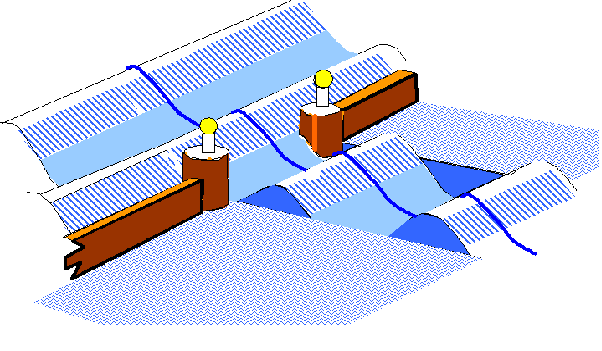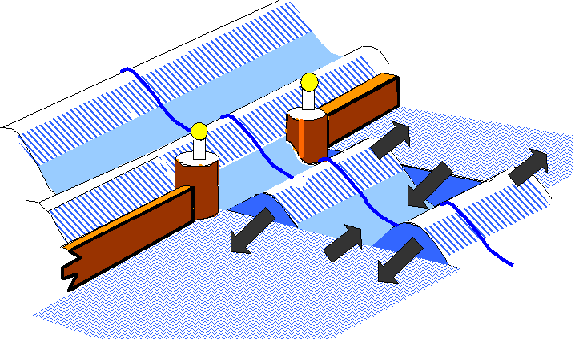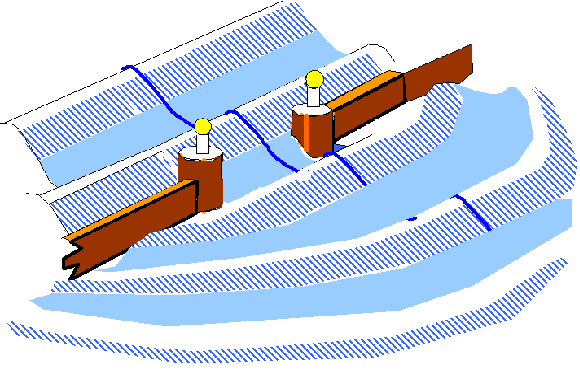Diffraction at an aperture
Now so far we have only discussed the rather abstract idea of the complex value of a travelling electron wave. It may help to think of a concrete example of wave interference and scattering. Later, we will relate the abstract concept of the 'corkscrew' wavefunction to what we discuss here.
Imagine sea waves coming into a harbour, through a gap in the harbour wall. We are going to draw a deliberately very wrong picture of what happens.

Would you see this happen in reality? What we have here is flat, undisturbed water behind the harbour wall. The sea waves come through the wall, and just carry on in a straight line. Of course, this is exceedingly unrealistic, because we know water never behaves like this. In particular, behind the harbour wall, the big water wave makes a very sharp (a 'discontinuous') shape at the edge of the wave, between the edge of the travelling wave and the still water. We all know that this would never happen in practice.
What would really happen? Well, as a first guess, we know that the artificial 'side' or edge of the wall of water in picture above, between the big wave and the flat water, would tend to move sideways, or rather 'blur' out. Water would try to flow from the big wave towards the flat water. Where the big wave has a lower value than the flat water, then the flat water would try to flow into the trough of the wave. The water would try to move according the pointers in the next diagram.

We don't need to do any mathematics to know what's going to happen in our harbour. We all know the water will 'slosh about' trying to make the surface of the water as gently-curving as possible. If you have ever watched waves on the sea or on the surface of your bath water, then you have probably developed an almost instinctive way of predicting wave motion in your mind's eye!
So, in the case of the harbour wall, we know the actual disturbance behind the harbour wall will look something like this

Once the sea wave pass through the aperture of the harbour wall, they will naturally begin to spread out into curved waves. You can actually see this happen in any real harbour. In fact, this is the whole rationale of a harbour. Because the sea waves spread out once they pass through a smallish gap in the harbour wall, they quickly dissipate. As they dissipate, their amplitude is reduced. The power of the waves which have been allowed into the harbour are spread out throughout the whole enclosed space of the harbour walls. This means that any boat or ship floating within the harbour only experiences very small (dissipated) waves, despite that fact that the inner water is exposed to the outside waves through the small gap in the harbour wall.
This spreading out of the wave is called 'diffraction'. It happens whenever a wave encounters a small gap, a resticted opening, or any sort of obstacle.
In the case of electrons, electron waves spread out (diffract) whenever they encounter an atom or if they are forced to pass through a small gap, like the objective aperture in the column of the electron microscope.



Copyright J M Rodenburg
| 
